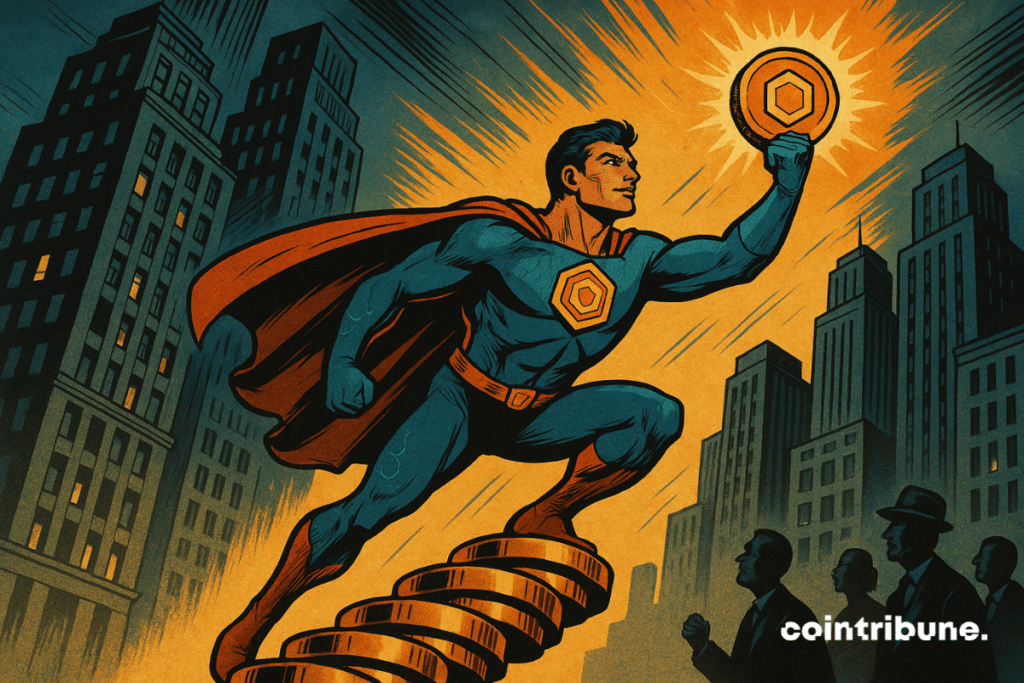Tokenized Funds Continue Their Rise
Since the launch of bitcoin ETFs, the convergence between TradFi and DeFi is becoming increasingly evident with the tokenization of assets. Among all the signs showing this convergence, the rapid growth of tokenized funds, which have just surpassed $5.7 billion, is undoubtedly the most revealing of this new era.

In brief
- Tokenized funds, a new financial product bridging TradFi and DeFi.
- Overview of the main tokenized funds.
Tokenized funds, a new financial product bridging TradFi and DeFi
These are actually new financial products, short-term funds using blockchain technology, which have been implemented by asset managers since 2021. For example, BlackRock recently adopted Solana for its blockchain fund, illustrating the growing interest of traditional players. The rating agency Moody’s, which closely monitors new trends in financial markets, also noted in its June 3 report that the capitalization of these funds now stands at $5.7 billion.
These funds indirectly allow investment in U.S. Treasury bonds or other low-risk assets and thus benefit from the returns of these assets. Taking the strengths of both worlds of finance, they attract both crypto investors, who have access to lower-risk investments than those coming from DeFi, and more traditional investors. The latter find in tokenized funds a financial tool that is more divisible and easier to use than traditional financial products. Indeed, subscription and redemption procedures here are almost immediate, as well as the distribution of returns.
Along with stablecoins, tokenized funds are the second step towards asset tokenization, a market expected to represent $16 trillion by 2030. While bitcoin is also present in TradFi with ETFs, TradFi is now developing in blockchain technology.
Overview of the main tokenized funds
For now, only a few major RWA players have positioned themselves in tokenized funds because the legal complexity of setting up the underlying assets to these tokens effectively excludes all smaller projects with fewer resources. The two main funds so far are BlackRock’s Institutional Digital Liquidity Fund (BUIDL) with $2.5 billion in assets under management, followed by Franklin Templeton’s OnChain US Government Money Fund with $700 million. Then, Superstate, Ondo Finance, and Circle each manage between $500 and $600 million.
Although this sector currently mainly affects the U.S. market because the regulation is more favorable there, other players see tokenization as a way to access other markets. This is the case of the German protocol Midas, which will offer European investors tokens backed by U.S. Treasury bonds. More precisely, Midas uses seven products managed by underlying protocols (for example, BlackRock and Superstate for its mTBILL). Currently, the yields offered in stablecoins on Midas range between 4 and 11.8%. Much easier to access than traditional banking products, one can understand the attractive power these tokenized funds may have with such returns.
Four years after their appearance in the RWA sector, tokenized funds are now mature financial products and fully play their role as a link between TradFi and DeFi. Even though their current growth is already a great success, their development is undoubtedly destined for a bright future.
Maximize your Cointribune experience with our "Read to Earn" program! For every article you read, earn points and access exclusive rewards. Sign up now and start earning benefits.
Passionné par l’histoire du Web3, je m’efforce de rendre cette nouvelle ère numérique plus compréhensible grâce à mes articles et à ma thèse de doctorat en cours sur le sujet.
The views, thoughts, and opinions expressed in this article belong solely to the author, and should not be taken as investment advice. Do your own research before taking any investment decisions.